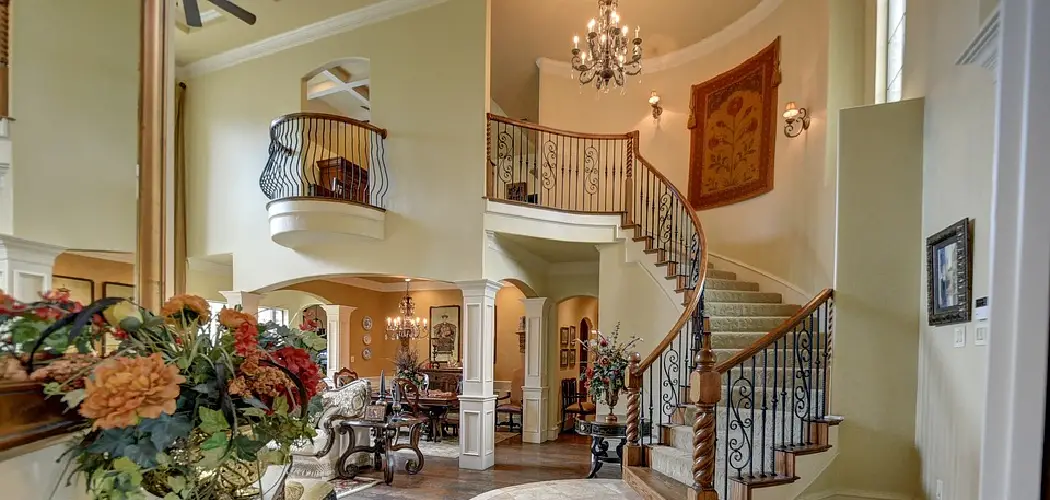If you are like me, you probably dread changing a light bulb in a high place. It always seems so daunting and complicated. However, it is not that difficult at all. In this article, I will walk you through the process of how to change light bulb in 2 story foyer. So, whether you are up for the challenge or not, keep reading!
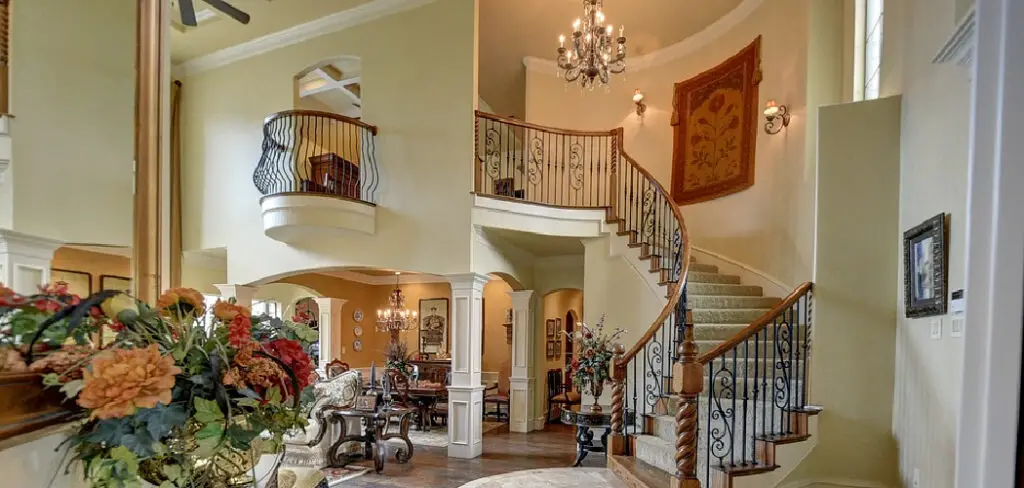
Changing light bulbs are one of the most common household repairs. It is something that everyone has to do at some point or another. And, contrary to popular belief, it is not as difficult as it seems. Changing light bulbs in a two-story foyer is not much different than changing them in any other location.
Summary: Changing a light bulb in a 2-story foyer can be a challenging task due to the height and accessibility of the light fixture. Ensuring your safety and using the proper tools and equipment is crucial when attempting this project. Gather necessary items such as a sturdy, tall ladder or a scaffold, a replacement bulb, and possibly an assistant to help with stability or handling tools and materials.
Begin by setting up the ladder or scaffold on a flat, stable surface, ensuring that it extends high enough to allow you to comfortably reach the light fixture without overextending or standing on the top rungs. If you’re using a ladder, have an assistant hold it steady while you climb, and always maintain three points of contact with the ladder (two hands and one foot, or two feet and one hand) for optimal safety.
Once you’ve reached the appropriate height, carefully unscrew the burnt-out light bulb, taking care not to drop it. Dispose of the old bulb according to local regulations. Screw the new light bulb into the fixture, ensuring it’s compatible with the fixture’s specifications and is securely in place. Descend the ladder or scaffold carefully, and have your assistant turn the power back on to test the new light bulb. If the task seems too dangerous or you’re uncomfortable attempting it, consider hiring a professional electrician or handyman to safely and efficiently change the light bulb in your 2-story foyer.
Things You’ll Need
- Ladder
- Light bulb changer
- Screwdriver
- Flashlight
A Stepwise Guide on How to Change Light Bulb in 2 Story Foyer
Step 1: Determine the Light Bulb You Need
The first step is to determine the light bulb you need. In most cases, you will need a standard A19 light bulb. However, if your foyer has a chandelier or other specialized light fixture, you will need to use a bulb specifically designed for that type of fixture.
Step 2: Turn Off the Power to the Light Fixture by Switching Off the Breaker Switch.
If you are unsure, which breaker switch controls the light fixture, ask a family member or friend for help. Once the power is off, remove the light bulb by grasping it at the base and pulling it straight out. Be careful not to touch the glass part of the light bulb with your bare hands, as it will be hot.
Step 3: Setup Ladder
If you have a light bulb that needs to be changed, but your ladder is too short to reach it, now is the time to set the ladder up. Place the ladder against the wall near the light fixture and use the step stool to reach the light bulb. Be sure to have someone hold the ladder in place while changing the light bulb.
Step 4: Remove Bulb Fixture
Now that the bulb is unscrewed, it’s time to remove the fixture. Reach up inside the light socket and grasp the metal ring surrounding the bulb’s base. Gently pull down on the ring while twisting the bulb counterclockwise. The bulb should come out quickly. Try gently wiggling it back and forth a few times before pulling again if it doesn’t.
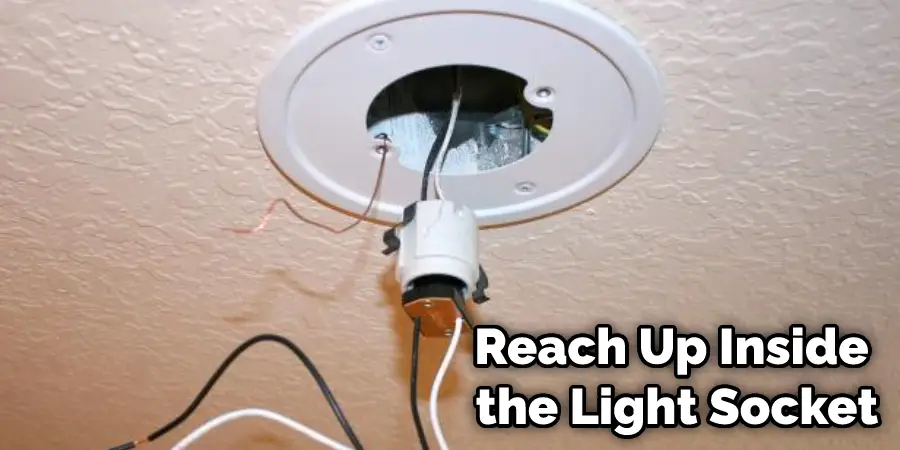
If the old lightbulb broke when you were trying to remove it, some glass shards might be left in the socket. Be very careful not to cut yourself when replacing the fixture. Instead, use a flashlight to check inside the socket for any remaining glass, then use needle-nose pliers or a chopstick to remove them if necessary.
Step 5: Insert New Bulb
Before installing the new bulb, check to ensure it’s the correct wattage for your fixture. Most lightbulbs list the wattage on the package. If you’re not sure, you can usually find the information in your fixture’s manual.
Please insert it into the socket once you’ve verified that the new bulb is the correct wattage. Twist it clockwise until it’s tight. Don’t over-tighten it, or you might damage the threads on the bulb.
Step 6: Replace Fixture and Screw In Bulb$$
In order to replace a ceiling fixture, one must first line up the holes in the fixture with the screws in the ceiling. Once the holes are lined up, the screws can be inserted and turned clockwise until they are tight. It is important not to overtighten the screws, as this can damage the fixture.
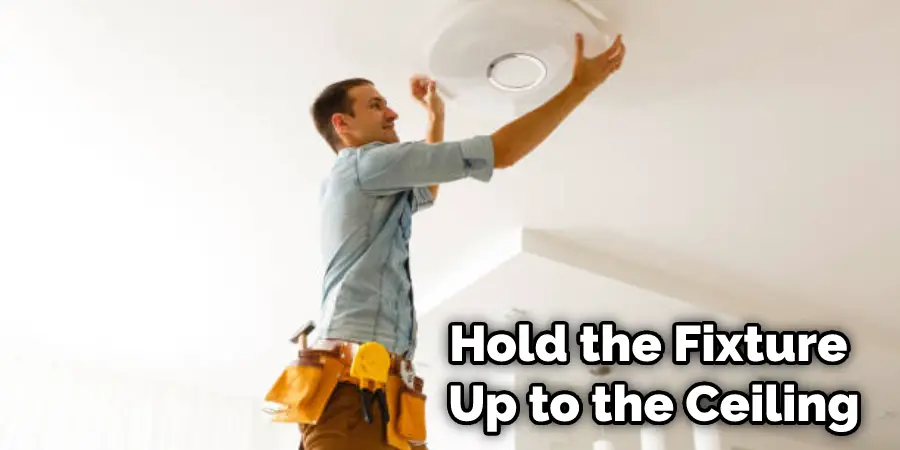
Once the fixture is in place, hold the bulb up to it and screw it in clockwise. Be careful not to touch the bulb’s glass with your fingers, as this will cause it to burn out sooner. Once the bulb is screwed in, tighten any remaining screws on the fixture. Finally, turn on the light switch to test your work if everything is working correctly; congratulations! You have successfully changed a light bulb in a two-story foyer.
Step 7: Test Your New Light Bulb
Once you have replaced the light bulb, it is essential to test it before walking away. To do this, turn on the switch that powers the light fixture. If the light bulb does not work, turn off the switch and check to ensure that the new light bulb is installed correctly. If it is, there might be something wrong with the wiring or the light fixture itself. In this case, you should contact a professional electrician to inspect and fix the problem.
Be sure to keep an eye on the light bulb to make sure it works properly and replace it when necessary.
Step 8: Clean Up
Once you have finished changing the light bulb, it is essential to clean up any mess that you may have made. This includes putting the tools back in the toolbox and wiping any dirt or oil off your hands. Make sure also to clean up any glass that may have been broken during the process. By cleaning up after yourself, you can avoid any potential accidents and ensure that the area is safe for everyone who uses it.
If the light switch isn’t working, go back and check for any mistakes. Once you’ve corrected any mistakes, test the light switch again. If it still isn’t working, you may need to call a professional electrician.
Tips for Choosing and Positioning a Foyer Chandelier
- Size Matters: The size of your chandelier foyer should complement the size of your foyer. As a general rule of thumb, the chandelier should be about one-third the size of the foyer’s width. If your foyer is large, consider a larger chandelier to make a bold statement.
- Style: Choose a chandelier that complements the overall style and decor of your home. If you have a modern home, opt for a contemporary chandelier, while a traditional home would benefit from a classic crystal chandelier.
- Height: The chandelier should hang at a height that allows for ample clearance for people to walk under it. Typically, it should be hung about seven feet from the floor and no lower than six feet.
- Lighting: Consider the amount of light that the chandelier provides. If the foyer is the main entrance and is used to welcome guests at night, you may want to consider a chandelier with multiple light sources.
- Dimmer: A dimmer switch allows you to adjust the lighting and create different moods for different occasions.
- Maintenance: Consider how easy the chandelier is to maintain. Dusting and cleaning can be a hassle, so choose a design that is easy to clean.
- Centering: Center the chandelier in the foyer. If you have a large foyer, ensure that it is centered along the axis of the entrance door.
Precautions
- Check that the light switch is off before you start changing the light bulb.
- Make sure that the ladder is stable before climbing up.
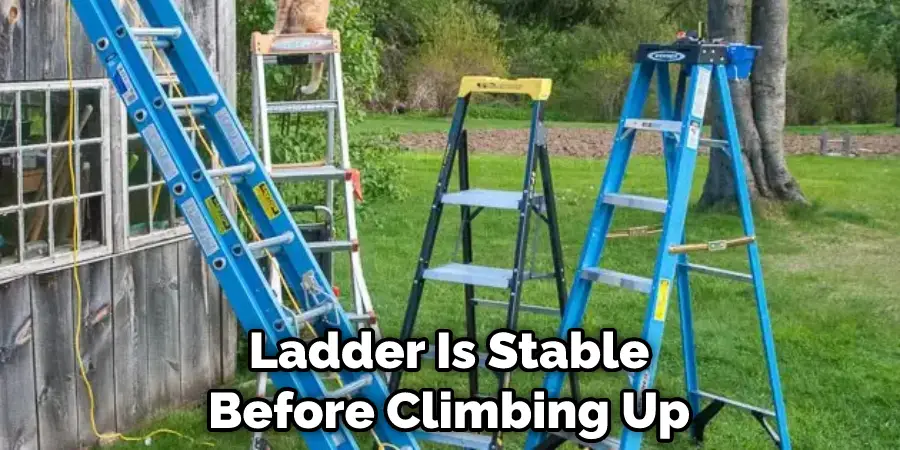
Be careful when climbing down the ladder if there are any wires or other objects on the ground that could cause you to fall.
If there are any children or pets in the house, make sure they are kept away from the ladder.
How Big Should a 2 Story Foyer Light Be
The size of your foyer light bulb is essential. A smaller foyer light won’t be as visible from the bottom of the stairs. A larger foyer light will be more noticeable and can provide more illumination.
When choosing a new light bulb for your foyer, consider the size of the fixture. Most standard light bulbs are either 60 or 75 watts. If you have a large foyer, choose a 100-watt bulb. Choose a 50- or 60-watt bulb if you have a small foyer.
Be sure to check the specifications of your light fixture to see what type of bulbs it takes. For example, some fixtures only take halogen or incandescent bulbs, while others can use CFLs or LEDs.
How Low Should Foyer Light Hang
When it comes to the height of your foyer light, there are a few things to consider. The main thing you’ll want to keep in mind is how high your ceiling is. Your foyer light should hang about six inches below the ceiling. However, if your ceiling is incredibly high, you may want to hang it a few inches lower. On the other hand, if your ceiling is low, you may want to hang it a few inches higher.
Another thing to consider is the size of your foyer. If it’s relatively small, you’ll want to hang your foyer light a little lower so that it doesn’t overwhelm the space. Conversely, if your foyer is large, you’ll want to hang it a little higher to be seen from all corners.
Ultimately, the height of your foyer light is a personal preference. So, feel free to experiment with different heights until you find what works best for you. Just make sure that you keep the things mentioned above in mind so that you don’t end up hanging your light too low or too high.
How Many Lumens Does a 2 Story Foyer Need?
A two-story foyer typically needs anywhere from 2,000 to 4,000 lumens of light. To ensure you have enough light in your space, it’s essential to consider the size of your foyer and the number of bulbs you’ll need. A good rule of thumb is to have 50 to 100 lumens of light per square foot. So, if your foyer is 10 feet wide by 20 feet long, you’ll need between 1,000 and 2,000 lumens of light.
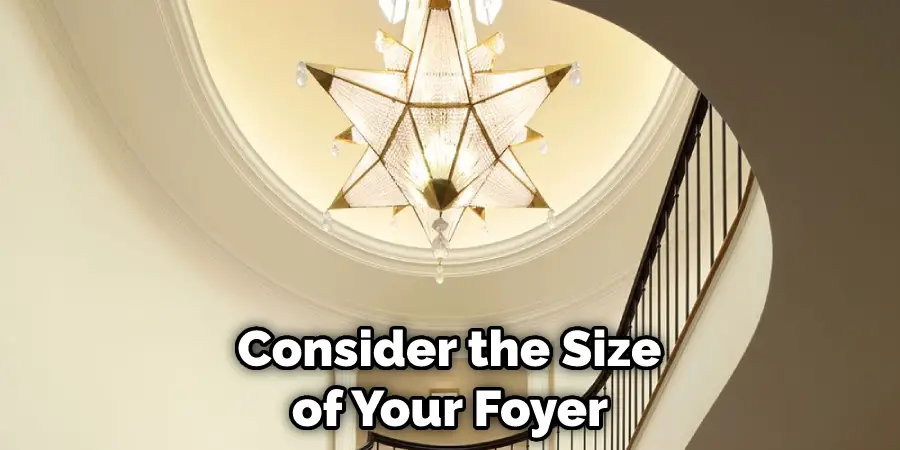
How to Hang a Chandelier in a
Two-Story Foyer?
Hanging a chandelier in a two-story foyer can be a daunting task, but it doesn’t have to be. The first step is to determine the correct size of the chandelier that will fit the height and width of your foyer. Once you’ve chosen the perfect chandelier, it’s time to turn off the power to the area where you’ll be working to avoid electrical shock accidents.
You’ll also need to locate the ceiling joists where the chandelier will be mounted using a stud finder. If the joists are not located in the desired location, you may need to install a support brace to hold the weight of the chandelier. Once you have located the joist, drill a pilot hole into it where the chandelier’s mounting bracket will be installed.
After securing the support bracket into the ceiling joist using screws, you can start assembling the chandelier according to the manufacturer’s instructions ensuring the wiring is done properly and securely. Once the chandelier is securely attached, turn the power back on, and test it to ensure that it works correctly.
Finally, adjust the height of the chandelier to ensure that it hangs at the desired level, and then tighten any screws or bolts to prevent movement. By properly following these steps, you can hang a chandelier in a two-story foyer effectively and efficiently.
Frequently Asked Questions
Can I Replace a Light Bulb by Myself?
Replacing a light bulb by yourself can be dangerous and is not recommended. When working with electricity, there are high voltages present that can easily cause injury if mishandled. Furthermore, many light bulbs contain lead which is harmful to the environment and human health. It’s always better to call an electrician in order to replace your light bulb safely and professionally.
Do You Need to Turn Off the Mains to Change a Light Bulb?
Doing so may even be counterproductive because it can lead to more damage and problems down the line. Instead, use your hands or a screwdriver to twist the base of the light bulb in order to adjust it. You can also use a pair of pliers for this, but make sure that you don’t squeeze too hard or you may damage the screw. Just twist until the bulb is positioned properly, and then tighten it in place.
Do You Need an Electrician to Change a Light Fitting?
For normal household lights, a DIYer might be able to do it themselves using basic tools and instructions. However, if you’re trying to change a ceiling light fixture or any other type of specialty lighting that requires more expertise or equipment, then an electrician will likely be required.
Either way, getting estimations for the work beforehand is always a smart idea so that any disagreements can be settled amicably (or at least successfully resolved). Plus, if there are any problems with the project later on- such as loose wiring or malfunctioning lights- having somebody on hand who knows what they’re doing can save time and hassle down the road!
Which Way Do You Unscrew a Light Bulb?
There are two types of light bulbs – those with screws on the base, and those with screws on the neck. If you’re not sure which type your bulb is, you can check the manufacturer’s website or contact them for assistance. In any case, unscrewing a light bulb is easy – just turn it upside down and pull out the screw.
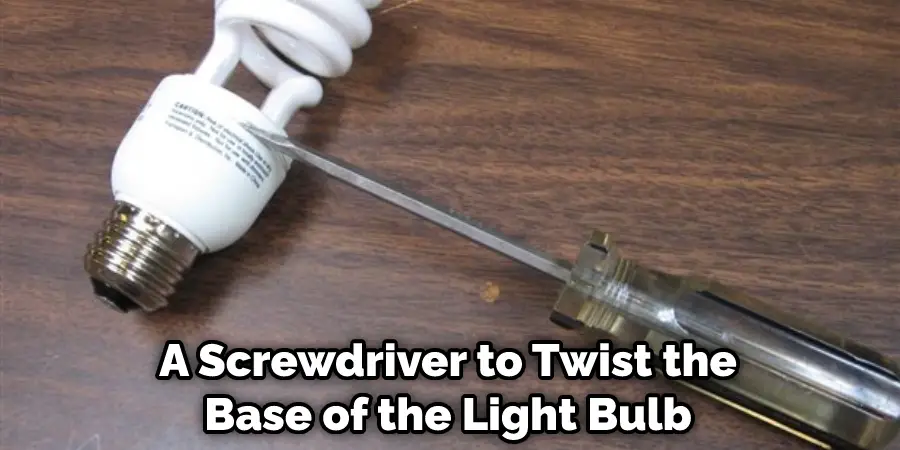
Conclusion
Changing a light bulb in a two-story foyer may seem daunting, but it can be a relatively easy task with the right tools and some basic safety precautions. Follow these simple steps to change that burned-out light bulb in no time! We hope you have gone through the article on how to change light bulb in 2 story foyer and learned about it.
